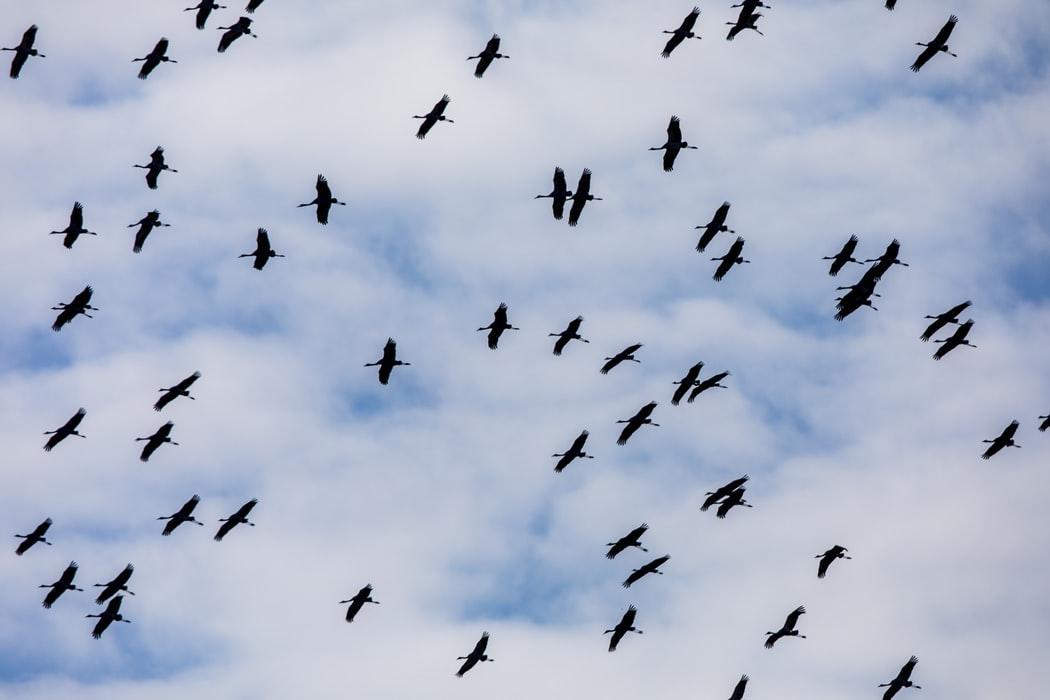Kenya birdwatchers log migrating birds for Spring Alive
International bird-sighting database updated by growing numbers of enthusiasts in Africa who log birds on migration ‘flyways’ from Europe to Africa

Your support helps us to tell the story
From reproductive rights to climate change to Big Tech, The Independent is on the ground when the story is developing. Whether it's investigating the financials of Elon Musk's pro-Trump PAC or producing our latest documentary, 'The A Word', which shines a light on the American women fighting for reproductive rights, we know how important it is to parse out the facts from the messaging.
At such a critical moment in US history, we need reporters on the ground. Your donation allows us to keep sending journalists to speak to both sides of the story.
The Independent is trusted by Americans across the entire political spectrum. And unlike many other quality news outlets, we choose not to lock Americans out of our reporting and analysis with paywalls. We believe quality journalism should be available to everyone, paid for by those who can afford it.
Your support makes all the difference.By Caroline Chebet for The Standard in Kenya
As the winter season slowly approaches in Europe, bird enthusiasts are in for a treat as migratory birds start arriving in Kenya’s Rift Valley. Conservationists say this season’s migration has started earlier than usual much to the delight of bird watchers and nature lovers.
Twice a year, millions of birds fly hundreds and even thousands of kilometres across continents in search of food and the perfect grounds to breed and raise their young ones.
James Kimaru, senior warden at Lake Bogoria National Reserve 150 miles north of Kenya’s capital, Nairobi, said eight species of migrants have been spotted in the past two weeks during the latest water-bird count.
The birds include the Madagascar pond-heron, African skimmer, the ruff, common sandpiper, wood sandpiper, and common greenshank.
Mr Kimaru said there were an estimated one million greater flamingos in Lake Bogoria while lesser flamingos numbered fewer than 2,000. Another group of birds called little grebe were a little over 1,000.
These birds are among dozens of species expected to grace major wetlands in the country in a phenomenon expected to last through to December.
Enthusiasts have taken to an online forum known as Spring Alive, which is a platform that brings together residents of several counties as they track and document the various birds sighted.
Spring Alive began as a European project and was extended to Africa in 2010, where from September onwards enthusiasts look out for the return of bird species from their breeding grounds in Europe and Asia.
This helps to create a real-time map of the incredible journeys these birds take every year.
Enthusiasts, experts, and tourists are expected to pitch camp at the Tugumoi Ridge flyway, west of Lake Bogoria, which forms part of the African-Eurasian flyway circuit, to watch as raptors and storks glide over the Rift skies from Egypt and other African countries.
A flyway is a flight path used by large numbers of birds while migrating between their breeding grounds and their wintering grounds. Flyways generally span continents and often pass over oceans.
“It is often an interesting time when bird watchers come together to witness the spectacle unfold on some set dates. A live feed linking several countries is usually key in updating visitors on the exact dates to expect the spectacle in certain points,” Kimaru said.
Nature Kenya communication officer John Mwacharo said this season’s Afro-Eurasian migration came earlier than expected with several regions across the country recording sightings in the just concluded water-bird counts.
“Water-bird counts are usually conducted during January and July/August just after the migration. This month, we have started receiving recordings which we are updating in Spring Alive where citizens record birds they have spotted to allow for data analysis and tracking,” Mr Mwacharo said.
A peek into Spring Alive under the Kenyan category reveals several sightings of white storks spotted in Rift Valley, Eurasian bee-eaters spotted in Mount Kenya and barn swallows spotted in parts of northern Kenya.
The birds make the journey despite the growing environmental pressures arising from deforestation and pollution.
On October 12, bird lovers celebrated World Migratory Bird Day whose theme this year was “Protect Birds: Be the Solution to Plastic Pollution!” The event highlighted the impact of plastic pollution on migratory birds and their habitats.

This article is reproduced here as part of the Giants Club African Conservation Journalism Fellowships, a programme of the charity Space for Giants and supported by the owner of ESI Media, which includes independent.co.uk. It aims to expand the reach of conservation and environmental journalism in Africa, and bring more African voices into the international conservation debate. Read the original story here
Join our commenting forum
Join thought-provoking conversations, follow other Independent readers and see their replies
Comments